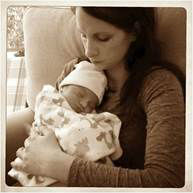 By Therése Palmiotto, Commercial Middle Markets Underwriter, The Travelers Co., Inc.
By Therése Palmiotto, Commercial Middle Markets Underwriter, The Travelers Co., Inc.
After being out of the office for a few months on maternity leave after the birth of my son Dominick, it was time to put down my diaper bag and pick up my briefcase. With a few weeks left before going back to work, I had to start evaluating my options for child care. As anyone who has done this can assure you, this is not a pleasant or exciting experience—especially for an insurance professional who understands the risks involved.
To help reduce some of the stress of the process, I put on my insurance hat and looked at each option through the eyes of an underwriter. Evaluating the exposures and controls, from fire escapes to slip-and-fall potential, helped my husband and I to make an educated and informed decision. In addition to the basic logistics parents use to make a decision, such as location, security and teacher experience, I thought it would be helpful to share some of the surprising insurance-based evaluations that helped us along the way.
Recommended For You
Want to continue reading?
Become a Free PropertyCasualty360 Digital Reader
Your access to unlimited PropertyCasualty360 content isn’t changing.
Once you are an ALM digital member, you’ll receive:
- Breaking insurance news and analysis, on-site and via our newsletters and custom alerts
- Weekly Insurance Speak podcast featuring exclusive interviews with industry leaders
- Educational webcasts, white papers, and ebooks from industry thought leaders
- Critical converage of the employee benefits and financial advisory markets on our other ALM sites, BenefitsPRO and ThinkAdvisor
Already have an account? Sign In Now
© Touchpoint Markets, All Rights Reserved. Request academic re-use from www.copyright.com. All other uses, submit a request to [email protected]. For more inforrmation visit Asset & Logo Licensing.







